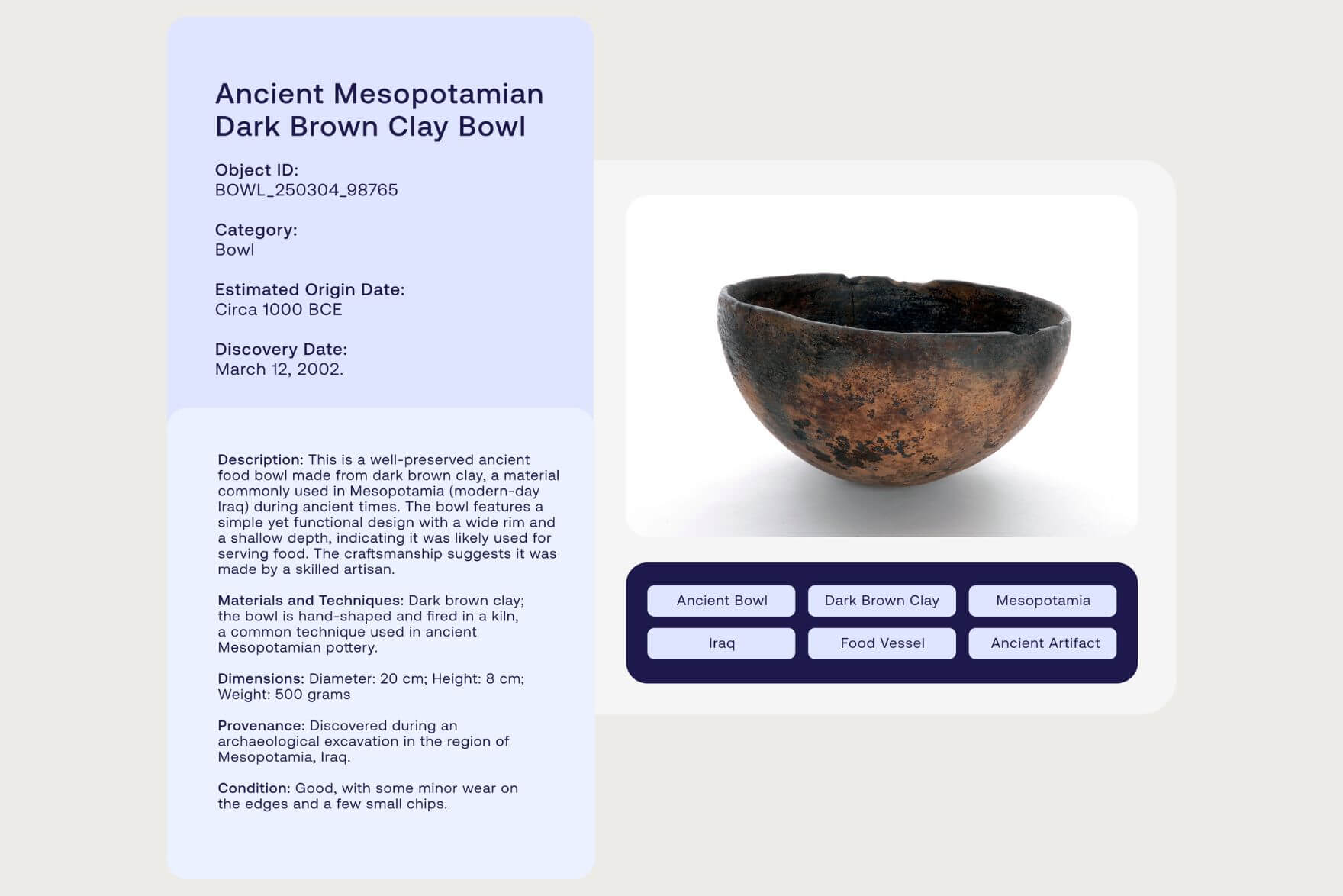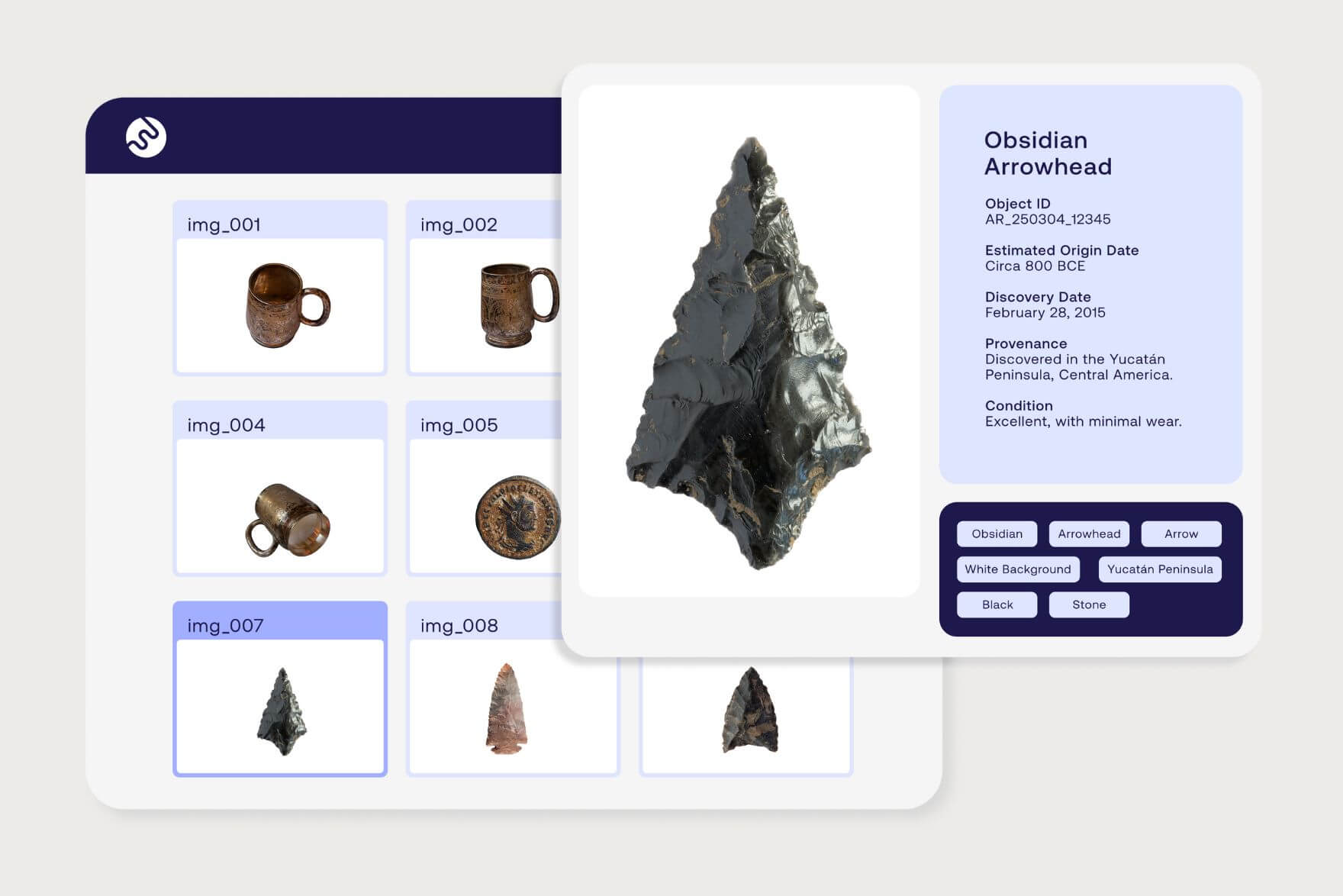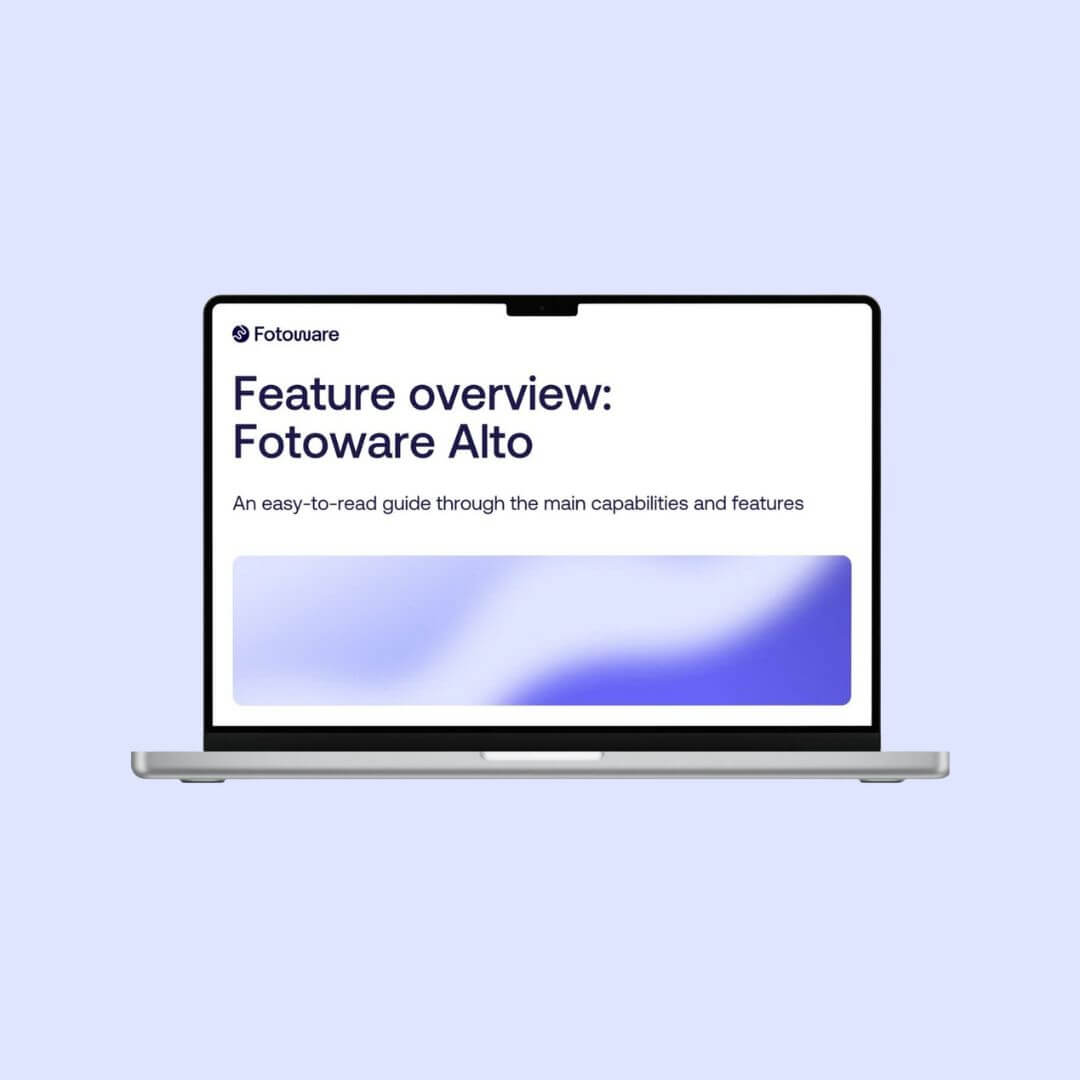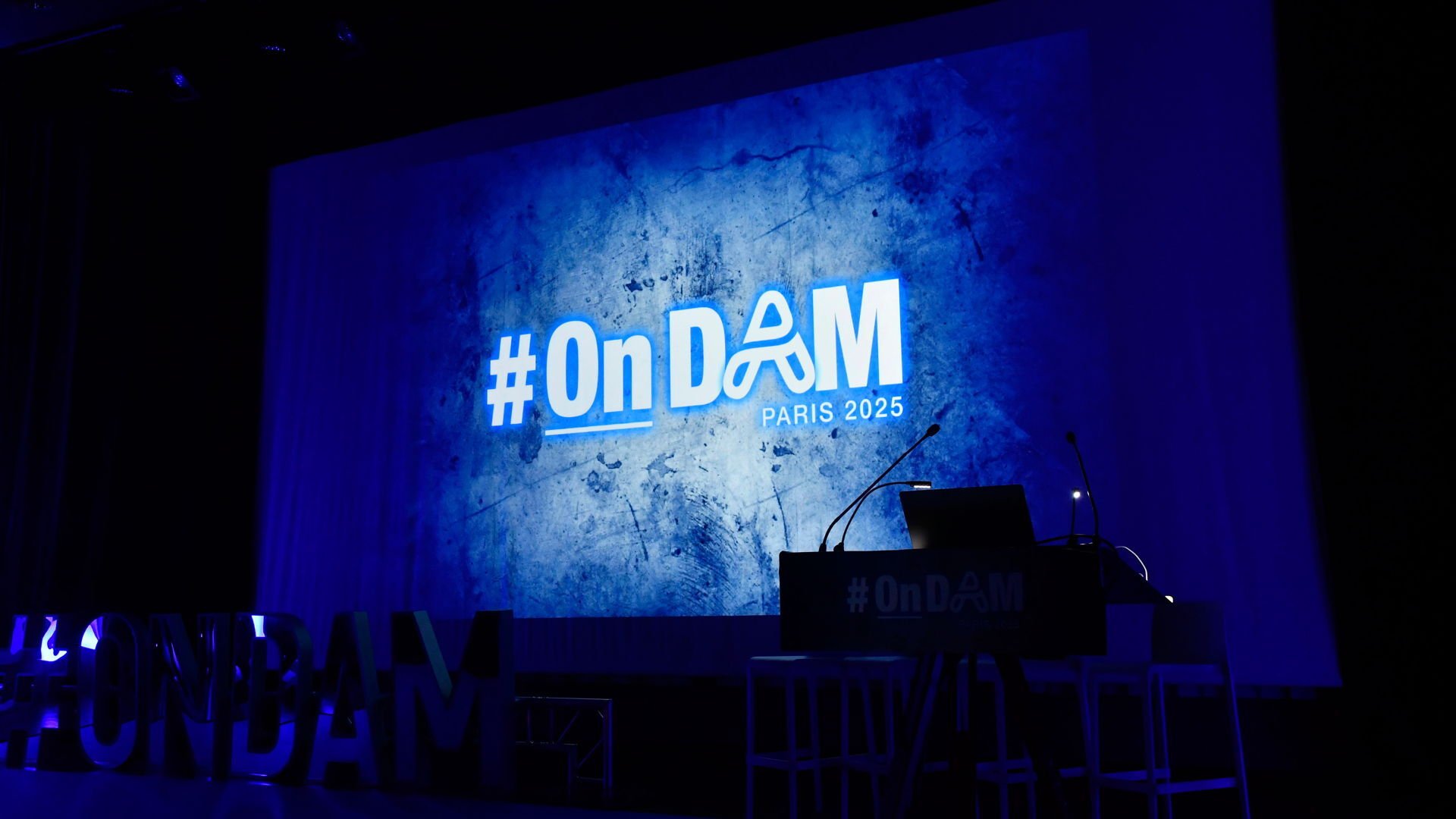
The ultimate guide to Master Data Management for media files
Managing large volumes of media files across various systems can quickly become chaotic without a unified data strategy. Master Data Management (MDM) brings structure, accuracy, and consistency to your organization’s content ecosystem. Discover what MDM is and how it transforms and streamlines media management.

What is Master Data Management (MDM)?
Master Data Management (MDM) is a way for organizations to keep their most important data – such as identification numbers, contextual information, technical details, usage rights, etc. – organized and accurate across all their channels and platforms. MDM ensures that everyone’s working with the same, up-to-date information by using specific processes and technologies. This means that whenever someone accesses a file, they can trust that its details are correct, complete, and in accordance with internal records.
Having an effective solution for Master Data Management helps avoid problems like duplicated data values, outdated information, or confusion over who can access what. It also helps organizations follow rules and regulations more easily, improves teamwork, and enables archives to grow without becoming too chaotic.
In short, MDM brings order and reliability to vast volumes of files and data, ensuring that stored knowledge is managed effectively and security.
Why Master Data Management matters
Master Data Management is pivotal in an era of exploding volumes of content and increasing data complexity.
Without MDM, organizations risk overpopulated data silos, conflicting information, and inefficient workflows – ultimately hindering business agility and decision-making.
With centralized and standardized key data, MDM empowers organizations to deliver accurate, reliable knowledge while supporting compliance, scalability, and operational efficiency across departments and technologies.

Advantages of Master Data Management
Establishing a clear strategy for Master Data Management delivers a range of benefits for your business operations, which are crucial for large organizations dealing with significant volumes of media files:
- Data governance and quality: Policies and metadata are standardized, ensuring consistency and adherence to internal and regulatory requirements.
- A single source of truth: With every data value is added once – and only once – errors and conflicting or outdated information is drastically reduced.
- Efficient workflows: Metadata and content can be automatically synchronized across multiple systems.
- Controlled vocabulary: Ensures that each data point is clearly defined, supporting consistent metadata usage across the organization.
- Scalability: Facilitates easy integration of new data sources and systems.
- Enhanced collaboration: Supports secure, role-based access to accurate information for both internal teams and external partners.

Creating a master record
The master record, sometimes referred to as the “golden record,” is the single, most reliable version of a data entry in your organization. It’s the primary source of truth across and the reference data for all related information, ensuring every instance is accurate and up to date.
Constructing a master record involves not just consolidating information, but enriching it with context, relationships, and relevant metadata – such as usage rights, keywords, and hierarchies. When updates are needed, they occur centrally and flow instantly to every connected platform, reducing confusion and duplication.
7 steps to creating a master record:
- Collect data from relevant sources within the organization.
- Check existing data for accuracy and consistency, i.e. have the same terms been used to describe the concept across departments and systems.
- Map out the data values in a structured hierarchy- make adjustments to old structures as needed.
- Inspect the data hierarchy and make sure each data entry is only representing one value. For instance, if “contributor” refers to the original author of a content item, it should not be used to describe current owners, photographers, or other people involved.
- Ensure granular access rights to the master records, as only authorized users should be able to make changes to it.
- Perform regular health-checks and updates to the record to reflect potential changes or necessary adjustments.
- Conduct internal training for everyone involved with content and data management.

MDM strategies across industries
Organizations are seldom successful in Master Data Management if relying on a “one-size-fits-all” type of approach, and the strategies may vary drastically depending on the industry one operates in.
Some examples of how different business segments work with MDM include:
Media & Entertainment
Prioritizes rights management, usage tracking, and rapid content distribution, relying on robust metadata to streamline licensing and syndication.
Museums & Archives
Focuses on detailed provenance, historical context, and hierarchical relationships to preserve and surface collections accurately.
Retail & E-commerce
Integrates MDM into their technical ecosystems to deliver consistent product information, visuals, and details across channels.
Healthcare & Life Sciences
Emphasizes compliance, patient privacy, and the standardized metadata tagging of sensitive media assets.
Public Sector
Requires precise record-keeping, transparent workflows, and secure access to media assets for regulatory and citizen-facing services.
Every sector benefits from tailoring MDM strategies to fit its specific regulatory, operational, and user requirements.
MDM and DAM: How they interact
MDM and Digital Asset Management (DAM) work hand in hand to optimize content operations. While MDM focuses on establishing and maintaining the authoritative master records and their metadata, DAM systems organize, store, and distribute the actual files.
Some DAM platforms – like Fotoware Alto – come with built-in Master Data Management software functionalities, enabling organizations to manage both assets and master data within a unified environment. This capability simplifies updates, centralizes control, and ensures that asset metadata remains reliable throughout its lifecycle.

Fotoware Alto Feature Overview
Find a comprehensive breakdown of key features in Fotoware Alto - the Digital Asset Management platform for large teams with advanced data structures.
In other cases, organizations may connect their DAM with external information systems, such as Collection Management or Product Information Management (PIM) solutions, to fetch and synchronize master data from third-party sources. In this way, MDM acts as a data hub, supplying the DAM with accurate, up-to-date information for each file or asset.
The ongoing synchronization between MDM and DAM ensures consistency, enhances search and discovery, and supports complex workflows – crucial for enterprises managing large, diverse collections of media files.
It's also worth noting that certain metadata follows the files directly, such as embedded information, AI-generated tags, version history, low-resolution thumbnails, manually added data, etc. In such cases, the DAM may be configured to send this data back to the data management system, or administrators may choose to keep certain types of information outside of the master records.

How to succeed with MDM for media files
To maximize the value of MDM for media content, organizations should follow these best practices:
Define clear ownership and roles
Assign responsibility for data assets, ensuring ongoing maintenance and access control.
Structure data hierarchies
Leverage taxonomies and relational metadata to enhance searchability and contextual relevance.
Automate metadata processes
Customize automations to assign, validate, and synchronize metadata, reducing manual errors.
Support multiple languages
Build data structures that facilitate localization for global audiences.
Regularly audit data quality
Monitor data integrity, perform audits, and refine governance as requirements evolve.
Invest in scalable technology
Choose solutions that adapt to growing volumes, varied file types, and new integrations.
Integrate your tech-stack
Don’t expect one software to do it all but opt for complimentary solutions that seamlessly integrate for efficient flows of content and information.
Foster collaboration
Break down silos by providing secure, role-based access to media and metadata for all stakeholders.
LEARN MORE: Common challenges in Master Data Management
*
With the implementation of a robust MDM framework, organizations not only unlock accurate insights and enhanced operational agility, but also position themselves to deliver rich, engaging content experiences at scale.
Yet, true digital success arises when MDM and DAM are thoughtfully aligned. While MDM provides the backbone for structuring and maintaining master records, DAM systems offer the specialized tools to manage, store, retrieve, and distribute these assets efficiently and securely.
Together, MDM and DAM form a cohesive ecosystem: MDM ensures that metadata is comprehensive, current, and universally accessible, empowering DAM platforms to deliver precise search, seamless collaboration, and effective rights management.
This synergy not only streamlines workflows and reduces manual intervention, but also fortifies content security, ensures compliance, and supports localization and personalization for diverse audiences.
In a rapidly evolving digital landscape, organizations that connect their systems for MDM and DAM gain a clear advantage in handling the rising volume and complexity of digital content.
See master data in action
A DAM solution built on solid data foundations can help your team centralize content, streamline approvals, automate metadata population, and improve control.
Ready to centralize and control your master data?

Let’s talk Master Data
Want to see how Fotoware Alto can centralize your metadata, eliminate duplication, and support scalable content operations across your organization?


